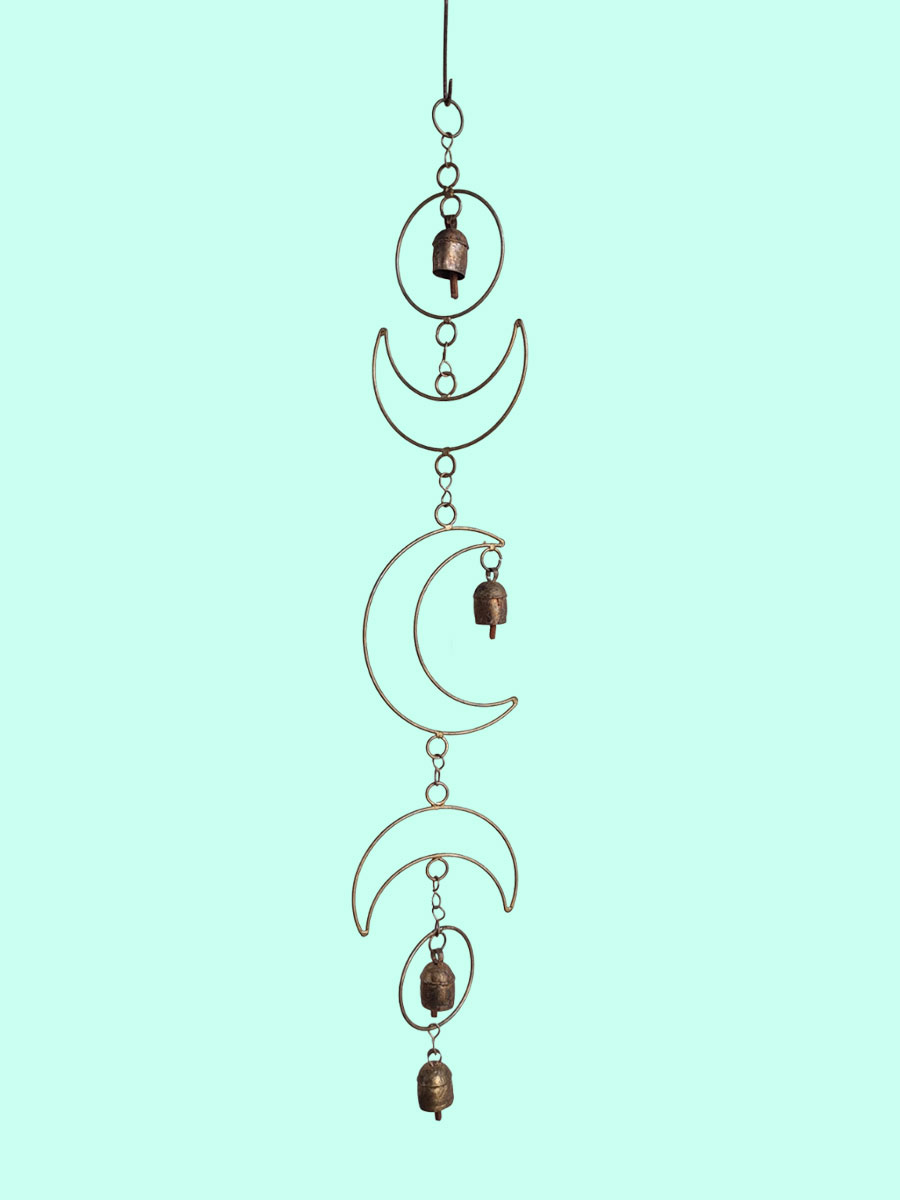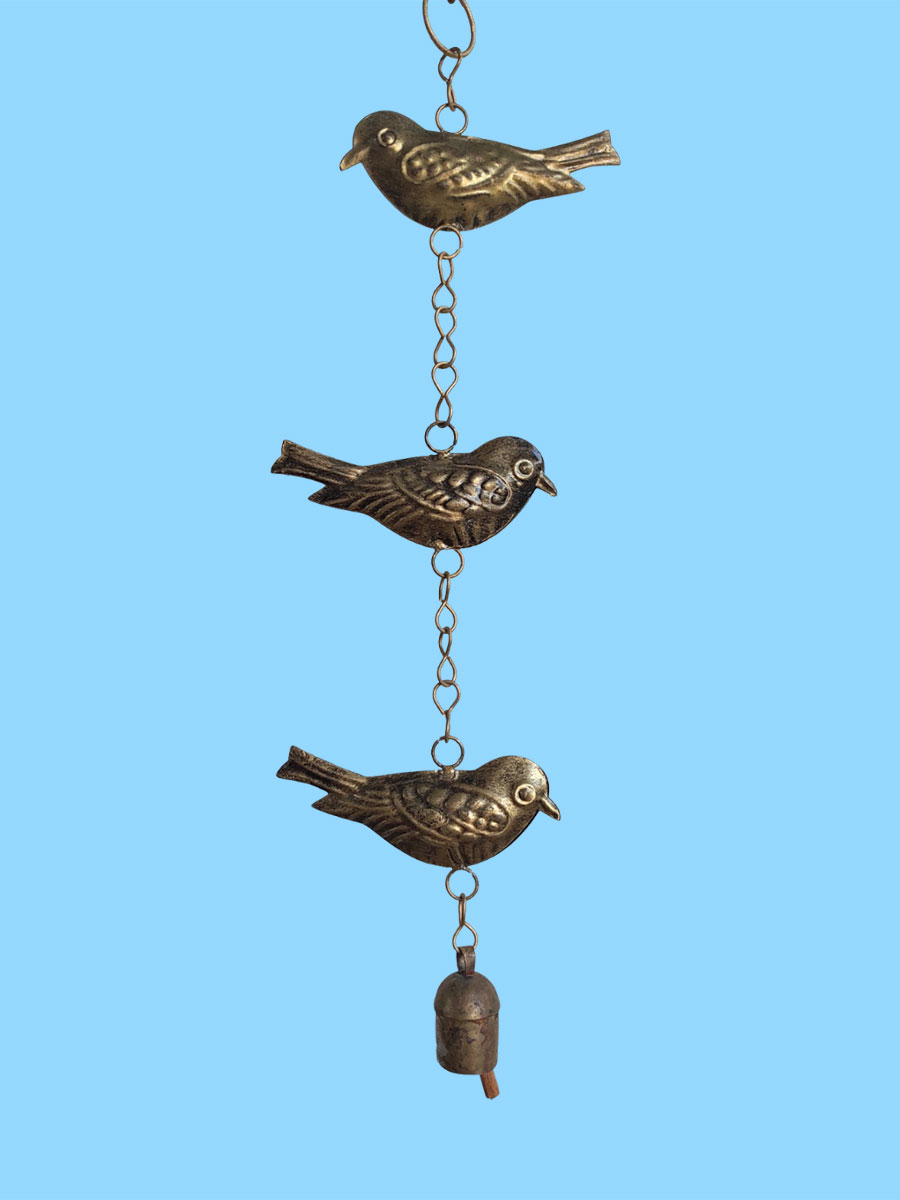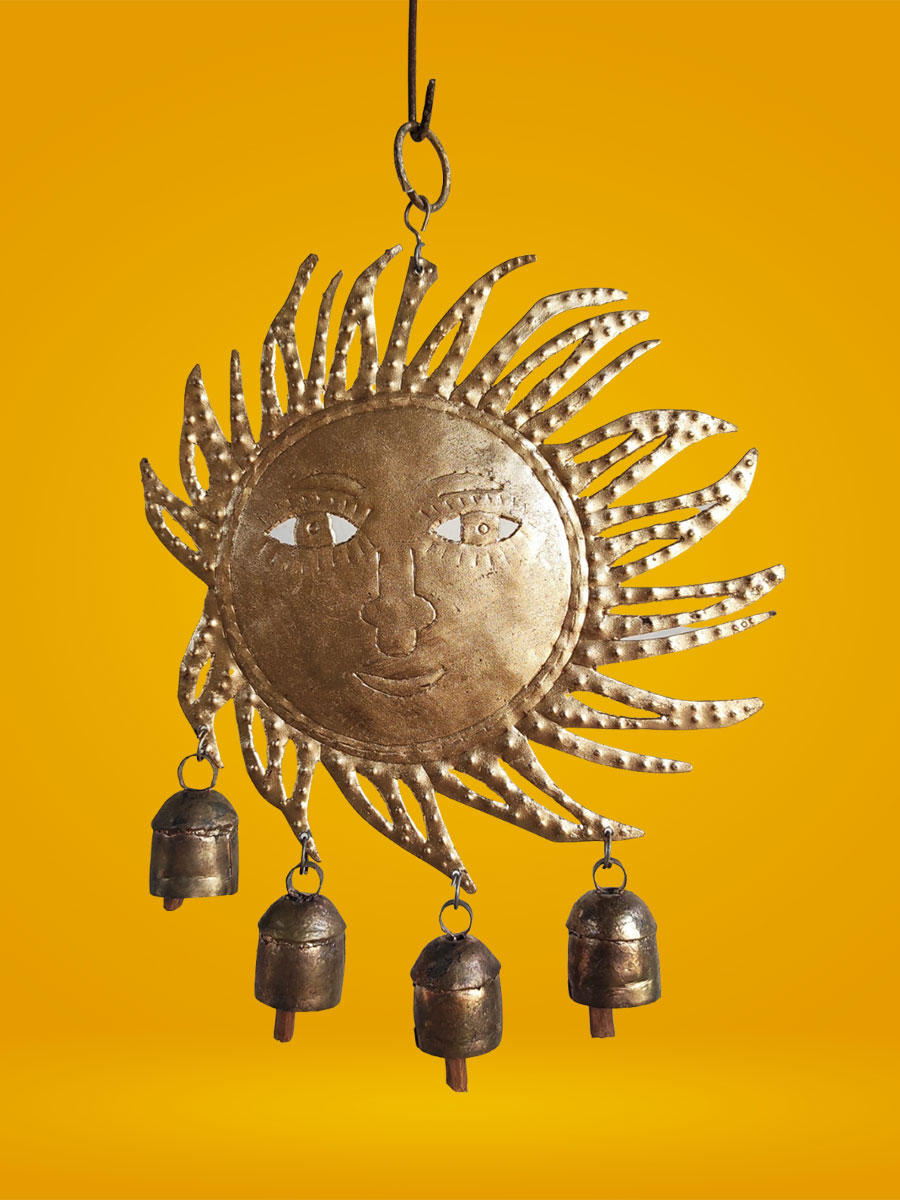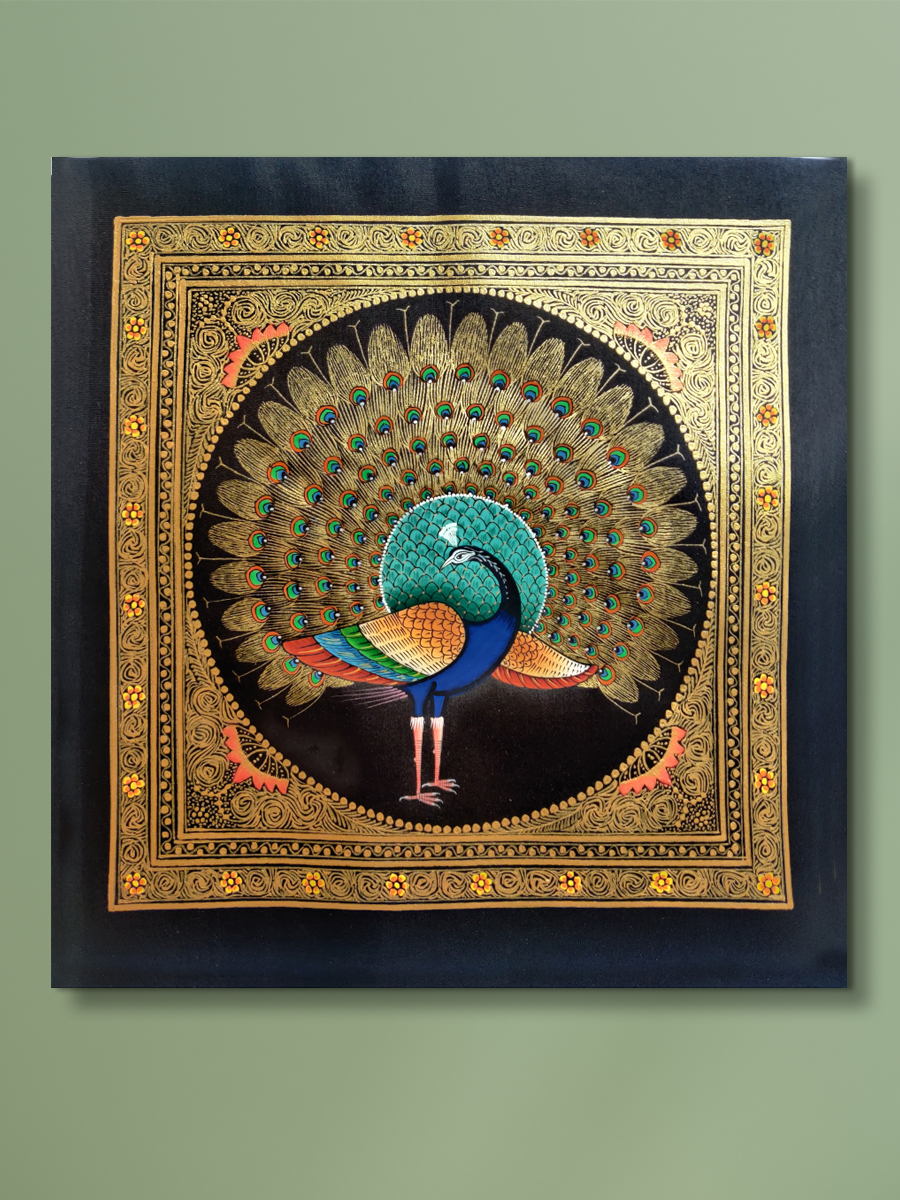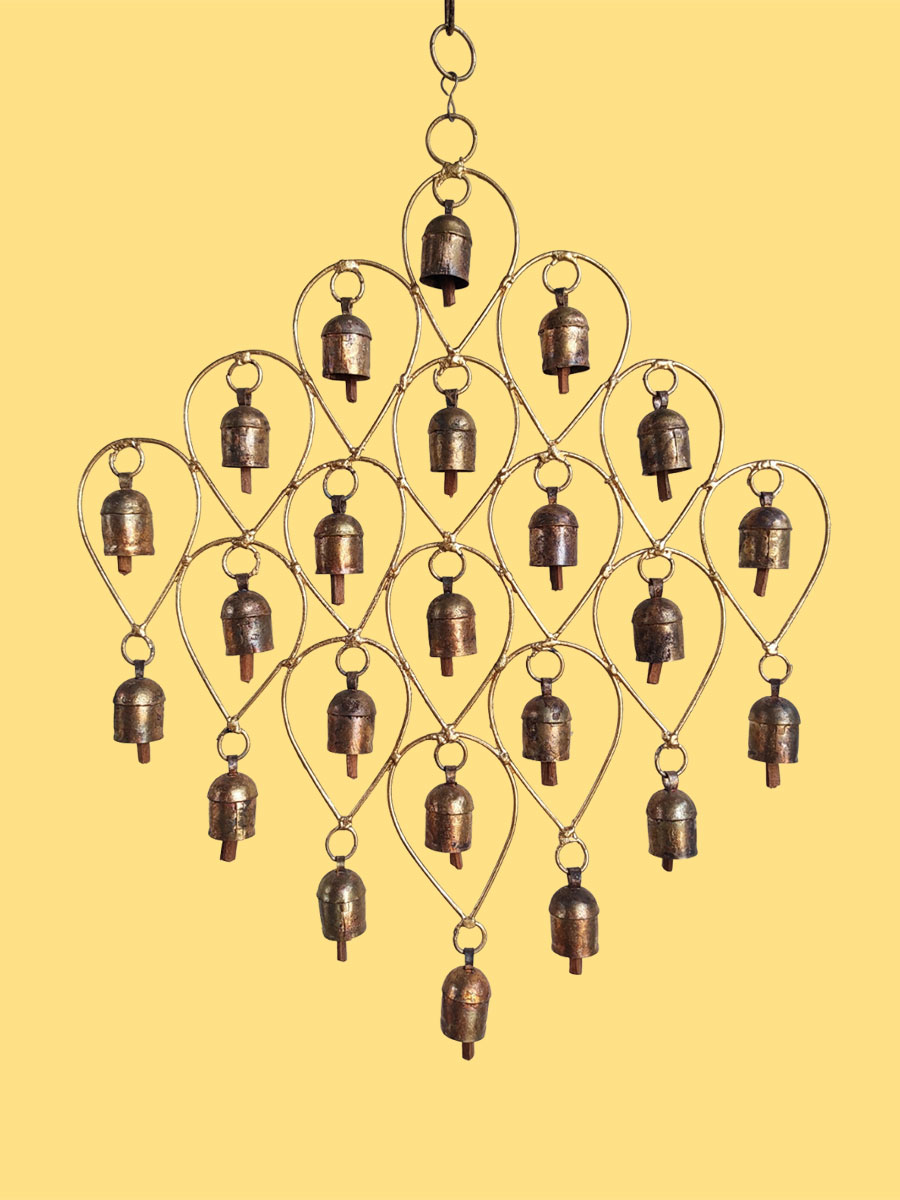The Beautiful Craft of Copper Bells

History - Journey from Identifying Cattle To Decorations
The story of copper bells is one of evolution and transformation, tracing back to the ancient civilization of Sindh, which is now part of modern-day Pakistan. The tradition of making copper bells in Sindh is said to date back over a thousand years, with the bells initially used to track cattle and also calm the animals. For instance, Ghantadi or crafting bells in the Kutch region of Gujarat is still associated with cattle rearing. Over time, the bell-making tradition spread to other regions of India, particularly to the northern state of Uttar Pradesh.
In Uttar Pradesh, the art of bell-making evolved into a cottage industry, with skilled artisans using traditional techniques to create ornate designs. Initially, copper bells were simple and functional, designed to be heard from a distance and to identify the cattle. But as the art form evolved, copper bells were crafted with more intricate designs and patterns, making them not just functional, but also decorative.
Today, bells are an important part of Indian culture, used in religious ceremonies, meditation, and as decorative items in homes and businesses. They have come a long way from their humble origins as a means of identifying cattle. Copper bells have evolved into exquisite decorative pieces, reflecting the cultural and religious diversity of India. The evolution of copper bells is a testament to the enduring quality of traditional crafts, and their ability to adapt and transform with the changing times.
Traditional Beliefs & Myths
Copper bells hold a significant place in Indian culture and are associated with several traditional beliefs and myths. Some of the most common ones are as follows:
- Warding off Evil Spirits: It is believed that the sound of copper bells has the power to ward off evil spirits and negative energies. In pastoral communities of Kutch and Saurashtra, the colour black is associated with power, and so, black yarn is used to fasten these bells to their livestock. Copper bells are also often used in religious and spiritual ceremonies to purify the surroundings.
- Bringing Good Luck: Copper chimes are believed to bring good luck and fortune to the home or establishment where they are placed. Award-winning artisans and craftsmen reside in the villages of Nirona and Jura in Gujarat, and are renowned for their exceptional bell and chime crafting workmanship.
- Signifying Prosperity: In Hinduism, copper bells are associated with the goddess of wealth, Lakshmi. It is believed that ringing copper bells in the home or business attracts prosperity and abundance, and brings financial success.
- Healing Properties: Some people believe that the sound vibrations produced by copper bells have healing properties and can help in treating various physical and mental ailments. The sound waves are said to balance the energy centres in the body and promote overall well-being.
- Warding off Insects and Pests: Copper has natural anti-microbial properties, and it is believed that the sound of copper bells can also repel insects and pests from the surrounding area.
Versatile Pieces of Differing Sizes And Designs
‘Copper bells’ are actually made of iron and coated with copper and brass. They come in different shapes and sizes, reflecting the diverse cultural and religious influences that have shaped the art form. For instance, Hindu and Buddhist temples often feature large, ornate copper bells with intricate carvings of deities and other symbols. Similarly, Islamic places of worship feature elegant copper bells with Arabic inscriptions and geometric designs. The usually seen variety includes:
- Temple Bells: Temple bells are usually large and ornate, designed to be hung in Hindu and Buddhist temples. These bells are often made of brass or copper and feature intricate carvings of deities and other symbols. They are often used in religious ceremonies and are believed to ward off evil spirits.
- Decorative Bells: Decorative copper bells are designed to be used in homes, businesses, and other cultural establishments. These bells come in a range of sizes and designs, from small handheld bells to larger hanging bells. Decorative bells often feature intricate etchings and designs, making them not just functional, but also visually appealing.
- Animal Bells: Copper bells have long been used to identify cattle and other animals. There are thirteen bell sizes available that are tailored for various animals. For instance, goats are provided with a small bell that produces a high-pitched sound, while cows are given a bigger bell that produces a deeper note.
- Wind Chimes: Wind chimes are a type of copper bell that is designed to be hung outdoors. They consist of a series of bells hung from a central frame, with each bell producing a different tone when struck by the wind. Wind chimes are often used in meditation and as a decorative element in gardens and outdoor spaces.
- Ghanta: Ghantas are large, hanging bells used in Hindu and Buddhist temples. These bells are often made of brass or copper and are believed to have spiritual significance. Ghantas are usually rung during religious ceremonies and are thought to purify the surroundings and attract positive energies.
- Prayer Bells: Prayer bells are handheld bells used in religious ceremonies and meditation. They are often made of brass or copper and come in a range of sizes and designs. The sound of prayer bells is believed to purify the surroundings and create a peaceful and harmonious environment.
Traditional sun motiff with bells
The Process Behind
The process of making copper bells is a fascinating one, and it involves a blend of traditional hand-crafting techniques and modern tools. The metal components are meticulously fitted together with a hammer, entirely free of any welding. If iron is the base metal, the parts are coated in powdered copper. Next, they are placed in a furnace to bond the copper dust coating on the iron sheet surface. This provides the unique, rustic look, the protection against rust, and most importantly, lends the sweet sonorous notes to the bell once it is given the form and shape by its creator. It then emerges as the near-finished product that is tested for its “ring” before the final product is provided the finishing touches by the craftsmans’ tools. Lastly, a wooden or metal piece known as the gong is affixed to the centre of the bell.
Handmade Rajasthani Miniature Painting of olive peacock
The Sound of Harmony & Unity In Communities
Handcrafting copper bells is a family affair. Let us understand how both men and women work together to produce a unique product every time.
- The menfolk typically handle the more physically demanding aspects of the process, such as hammering the iron sheets to give them shape, and later on processing the coated frames in a furnace and then in the end finishing the product off to ensure that each bell has the distinct ring to it.
- The womenfolk usually are in charge of applying a coating of copper dust to the iron bell-shaped piece and then covering the structure with a thick coating of locally available mud, using a technique that resembles kneading dough.
- In the furnace, the copper dust reacts with iron and the mud and forms a coating on the iron bell-shaped structure that gives it its distinctive reddish-brown colour. This is an intense process, and each unit has to be rotated periodically in the furnace to ensure that every surface gets heated uniformly.
- Once thoroughly done, the hardened mud moulds with the bell-shaped units inside are dipped in water to cool them down, and then the moulds broken to bring out the metallic bell shaped structures.
- Then, to complete the finished product, each bell shaped unit is worked upon with a hammer and chisel to give them the distinctive sounds that are so characteristic of the bells of Kutch.
- In this process, families are able to share their skills and knowledge with each other, passing on this beautiful art of bell-making from one generation to the next.
Set of 23 soft, sonorous bells
This art form strengthens the social fabric of the village, providing a sense of community and shared purpose.
The tradition of copper bell-making has been kept alive by dedicated maestros and artisans, including both men and women, for whom it is also an important source of livelihood. Their dedication stems partly from their love for fine art and partly from their confidence in the patronage that they will receive from the discerning eye of craft-lovers.


 USD
USD  GBP
GBP EUR
EUR AED
AED



